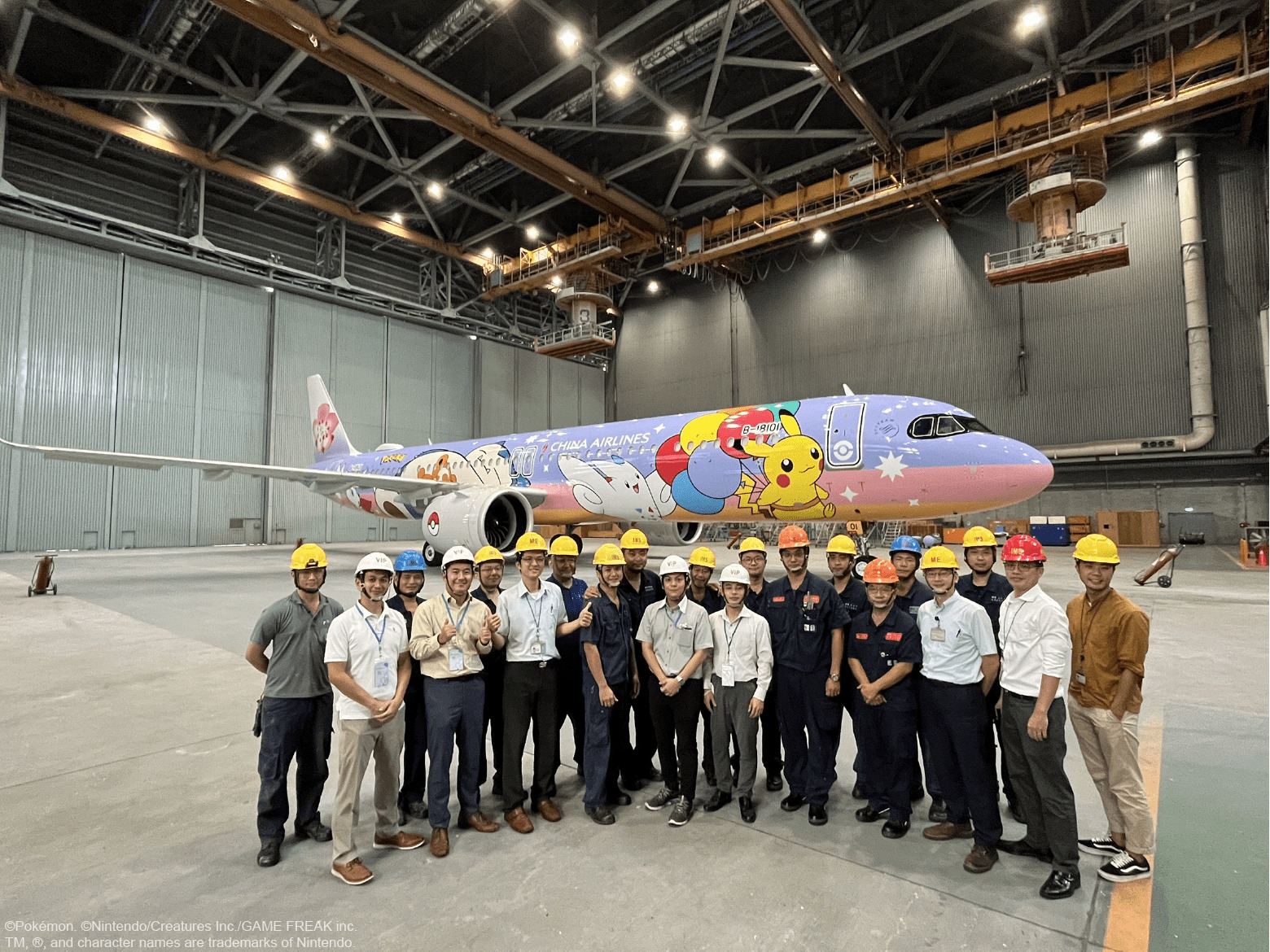China Airlines "Pikachu Jet CI" Documentary Now Online - A Behind the Scenes Look at the Painting of a Great Livery
Published: Nov 22, 2022The China Airlines documentary on the painting of the "Pikachu Jet CI" livery went online. The camera offers a look behind the scenes of the first time that "full body spray painting" was used on this A321neo narrowbody passenger aircraft. Over 20 experienced technicians worked in turns to cover the fuselage with bright and lively colors. The process involved 36 types of paints and took 21 days, making it more time-consuming than painting a 747 widebody passenger aircraft. The result is the most colorful liveried aircraft in the history of China Airlines. No China Airlines livery had ever taken so much time to apply either.
The graphic design for the "Pikachu Jet CI" was created by The Pokémon Company. MRO Japan provided its expertise in aircraft maintenance and livery application, while the professional team at China Airlines converted the 2D design to 3D and then painted it onto the fuselage in a joint multinational effort. The Pokémon Company paid close attention to every detail. Video conferencing and on-site discussions were held to finalize the positioning of each Pokémon character on the fuselage. MRO Japan helped with the positioning and fine-tuning of designs. The China Airlines team carried out the mission in a tight time frame in the most professional and collaborative manner. The quality of the paint job not only satisfied the Japanese requirements but also won their praise for professionalism and efficiency. The China Airlines "Pikachu Jet CI" ran into a number of challenges from the preparation of materials to the actual painting and delivery. COVID-19 led to shortages all around the world. Though 36 types of paints were ordered from overseas, two were specially formulated custom colors with long delivery times. The paint strippers, labels and other materials all had to be sourced from different suppliers as well. Extra care had to be taken with scheduling as there was no room for delays in materials. The team worked flat out to track shipments, arrange for transfers and find alternative suppliers. Six months of preparations were completed in a little over three months and the job was successfully executed.
Past liveries were applied using decals and this was the first time that China Airlines had used spray painting for coloring the design. The actual process was very painstaking. First, the transparent coating on the fuselage had to be polished, stripped and cleaned. Next, the primer and finish had to be applied layer by layer and then the template for each Pokémon was fixed in place and the outline drawn in black paint. Each design was then colored in a special order. Finally, a transparent coating was applied to create a brighter appearance.
The windows, antenna, and important markings had to be avoided during the livery painting process to ensure that all eleven Pokémon characters were shown in full. The curvature of the fuselage had to be overcome as well. After each color was painted, there was a three to four hour wait for the paint to cure before it was covered in kraft paper to ensure that it wouldn’t be contaminated by other colors applied later. The same actions were repeated over and over again until each Pokémon was presented in their full, cute glory. The Pokémon Ball on the belly in particular had been placed in a slightly different location under the original design. After communicating with the on-site team and obtaining their advice, the Pokémon Ball was centered on a lower beacon light as a little night-time surprise. There were many other clever touches with Pokémon Balls on both engines and stars on the winglets. About 39 stars dotted the entire aircraft, symbolizing how the sun rises in a starry sky and that soon travelers would take to the air.






